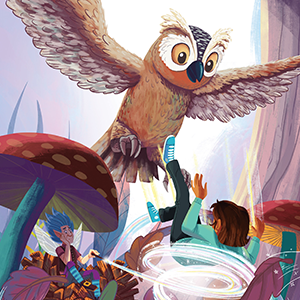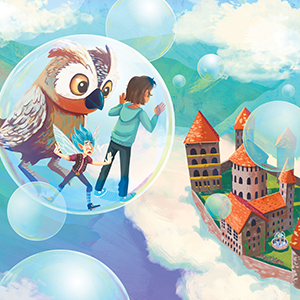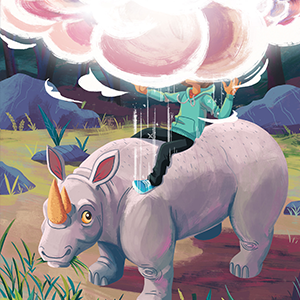–
–
“If you build a wee home
with love and care,
a magic fairy will come. It only takes faith
and a little imagination.”
–
–
Something different from me, a lighthearted project in the CHOOSE YOUR OWN ADVENTURE format (thank you, Chooseco). Despite their popularity, I never felt that a fairy story was my domain. But why not? After interviewing author Liza Gardner Walsh (who is fabulous, and a fairy *expert*), I was inspired by the possibilities — beginning with the hope-filled activity of building a fairy house with natural materials. Of course, my fairy is not called Silverwings or Emerald Dancer. He’s named Bert the Below Average, and not all of his magic works out as planned. Hopefully a lively, funny, entertaining book that can be read, and reread, again and again, each time with a new ending. Now available, 80 pages, ages 5-8, wonderfully illustrated by Norm Grock.
BUT WAIT, BEFORE YOU RUSH OUT TO BUY THE BOOK . . .
I wanted to talk a little bit about writing in this crazy format, because it was so different from anything I’ve done before. You see, the books are backwards.
Briefly, the Choose-Your-Own-Adventure (CYOA) format, trademarked by Chooseco, requires a unique set of assumptions and rules. The idea is that YOU, the reader, has agency: the story is about you, and you make decisions along the way. So it is written in the second person, a first for me.
Talk to the owl? Turn to page 16. Hide from the owl? Turn to page 36.
But there’s something else that makes these stories so weird to write: The endings don’t matter.
I mean, they don’t matter in the usual way that endings matter. In the case of Fairy House, a book of only 80 pages, there are 13 different endings.
–
–
–
–
When most of us write books, the ending matters a lot. I mean, a really lot. It’s the dramatic conclusion, the culmination, the part where full meaning takes place. The last joke, the grand finale, the end of the trail — the part we’ve been driving toward the entire time.
Well, throw that all away.
As the writer of a CYOA story, you can’t get too invested in any one ending. In fact, this is very important: there’s no “true” ending. It’s not like there’s one “right” ending and then a bunch of dead ends. That would be the wrong way to think about a CYOA. Every ending is valid; every ending has to work and satisfy the reader. You are not driving the boat — it’s the reader at the wheel, making all the decisions.
You have surrendered the most important part of your story — usually the reason for telling the story. No, you’ve handed it over to some unknown reader in Boise, Idaho . . . or Burbank, California . . . or Istanbul, Turkey.
THE BEGINNING IS NEARLY EVERYTHING
So what’s the trick? It’s the beginning that matters most. Think of a CYOA story as a tree. Picture that image in your mind. The unseen roots, the powerful trunk, the many branches. The opening of the story is the trunk. The many possible choices, or pathways, are the branches that grow from out of that trunk.
The CYOA form is dendritic. Tree-like.
If you don’t have a strong trunk — a sturdy set-up — than it will never hold the weight of all those possible storylines.
It takes a little time for the opening to Fairy House to establish itself. The reader doesn’t begin to make choices until page 9. Here’s the opening of the story . . .
–
You sit on a tire swing in your backyard. Kicking the air, going nowhere. Bored, bored, bored. Your parents work at home and stare at their computers all day long. You feel lonely and there’s nothing to do. But you remember something your grandmother once said: “If you build a wee home with love and care, a magic fairy will come. It only takes faith and a little imagination.”
Could it be true? You decide to find out.
You pick a spot beneath an oak tree. You gather up acorns, tree bark, pine cones, a cardinal feather, flower petals, stones, and more. You make a little bed of sticks, cushioned with soft fir needles. You add a layer of moss for a blanket. You finish it all off with two magnolia leaves framing the front door.
Your fairy home looks awesome — a magical little world — and you want to show someone.
“Maybe later,” your mother says, click-clacking on the computer keyboard.
“Maybe later,” your father says, scrolling through rows of numbers on the computer screen.
Neither parent even looks at you.
The black cat, Midnight, seems curious. She follows you outside, prowling softly on padded feet.
And you wait, and you wait some more. But nothing happens — because nothing ever does. Oh well. You set up your stuffed bunny, Old Mister Ears, to keep watch. You go inside for the night.
The next morning, you check. Strange, the moss blanket has been tossed to the ground. Perhaps it was the wind. Or a restless chipmunk. An acorn falls, landing with a dull thump. You hear a groan: “Oof!” You see a flash of movement, quick as a hummingbird. But it wasn’t that. These wings glowed.
You spring to your feet to investigate. Moving quickly, you peek around the old oak to gaze at the quivering stems of April daffodils. Something cowers behind them.
You drop to your hands and knees, scarcely breathing.
Hardly taller than your thumb, the creature has unusually large eyes, long skinny legs, and small, delicate wings of a honeybee.
And so you say, ever so gently, “Well, hello there.”
IF YOU’D LIKE TO READ MORE . . . NOW YOU CAN BUY THE BOOK!
Let’s close out with another (happy!) illustration by Norm . . .
–
Thanks, as always, for your interest & support.





















